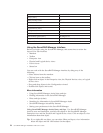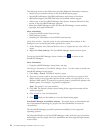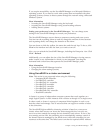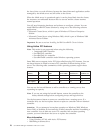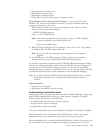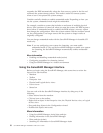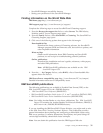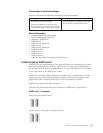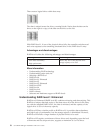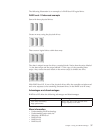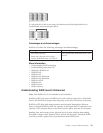
In addition, the following IBM Redbooks might be of interest:
v Implementing Netfinity Disk Subsystems: ServeRAID SCSI, Fibre Channel, and SSA
v Tuning Netfinity Server for Performance: Getting the most out of Windows 2000 and
Windows NT 4.0
v Netfinity Director: Integration and Tools
v Netfinity Clustering Planning Guide
You can download these publications from the IBM Web site: www.ibm.com/
redbooks
Understanding RAID technology
Redundant array of independent disk (RAID) is the technology of grouping several
physical drives in a computer into an array that you can define as one or more
logical drives. Each logical drive appears to the operating system as a single drive.
This grouping technique greatly enhances logical-drive capacity and performance
beyond the physical limitations of a single physical drive.
When you group multiple physical drives into a logical drive, the ServeRAID
controller can transfer data in parallel from the multiple drives in the array. This
parallel transfer yields data-transfer rates that are many times higher than with
nonarrayed drives. This increased speed makes the system better able to meet the
throughput (the amount of data processed in a given amount of time) or
productivity needs of the multiple-user network environment.
The ability to respond to multiple data requests provides not only an increase in
throughput, but also a decrease in response time. The combination of parallel
transfers and simultaneous responses to multiple requests enables disk arrays to
provide a high level of performance in network environments.
More information
v Things to consider when changing the RAID level
v Understanding stripe-unit size
v RAID level-0
v RAID level-1
v RAID level-1E
v RAID level-5
v RAID level-5 Enhanced
v RAID level-5EE
v RAID level-6
v RAID level-x0
v RAID volumes
Understanding stripe-unit size
With RAID technology, data is striped across an array of physical drives. This
data-distribution scheme complements the way the operating system requests data.
The granularity at which data is stored on one drive of the array before subsequent
data is stored on the next drive of the array is called the stripe-unit size .
You can set the stripe-unit size to 8 KB, 16 KB, 32 KB, or 64 KB. You can maximize
the performance of your ServeRAID controller by setting the stripe-unit size to a
32 ServeRAID Manager Installation and User's Guide



